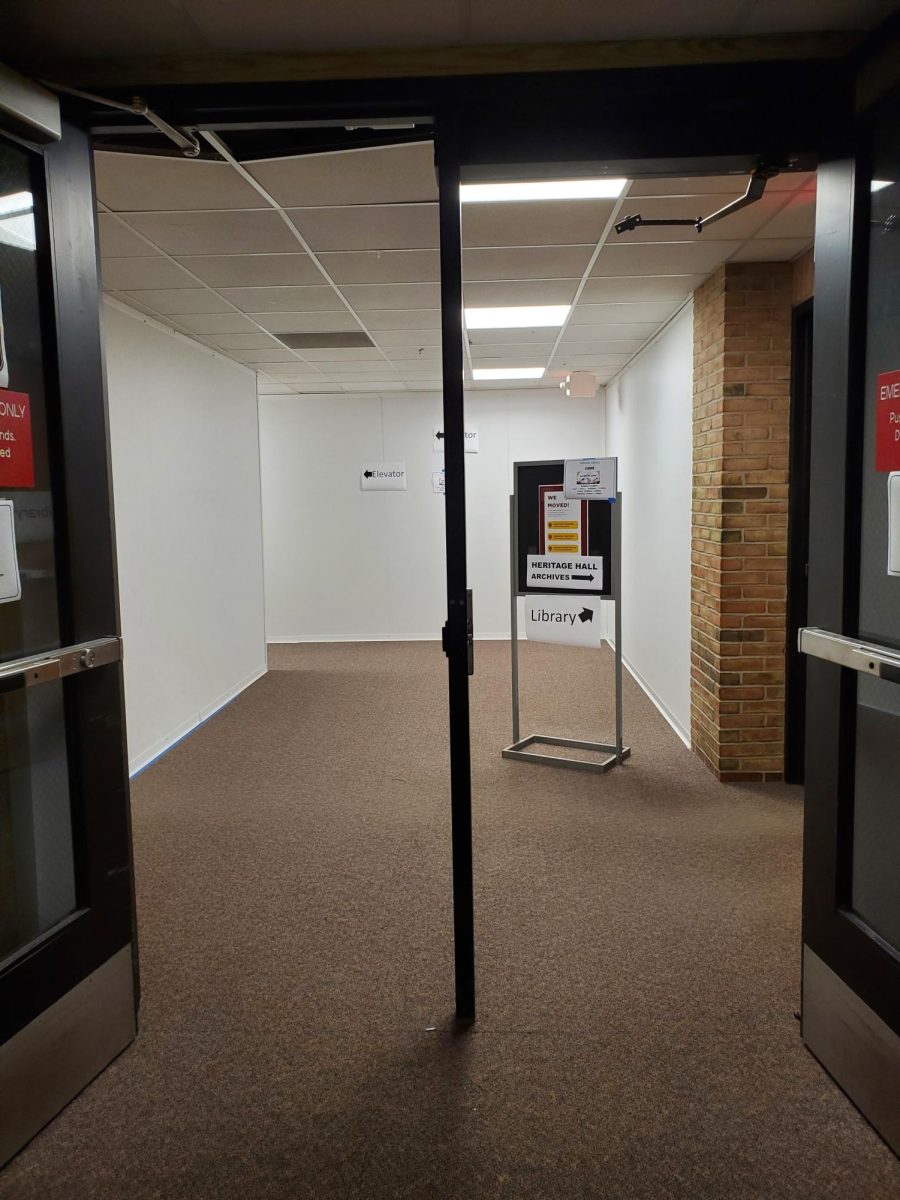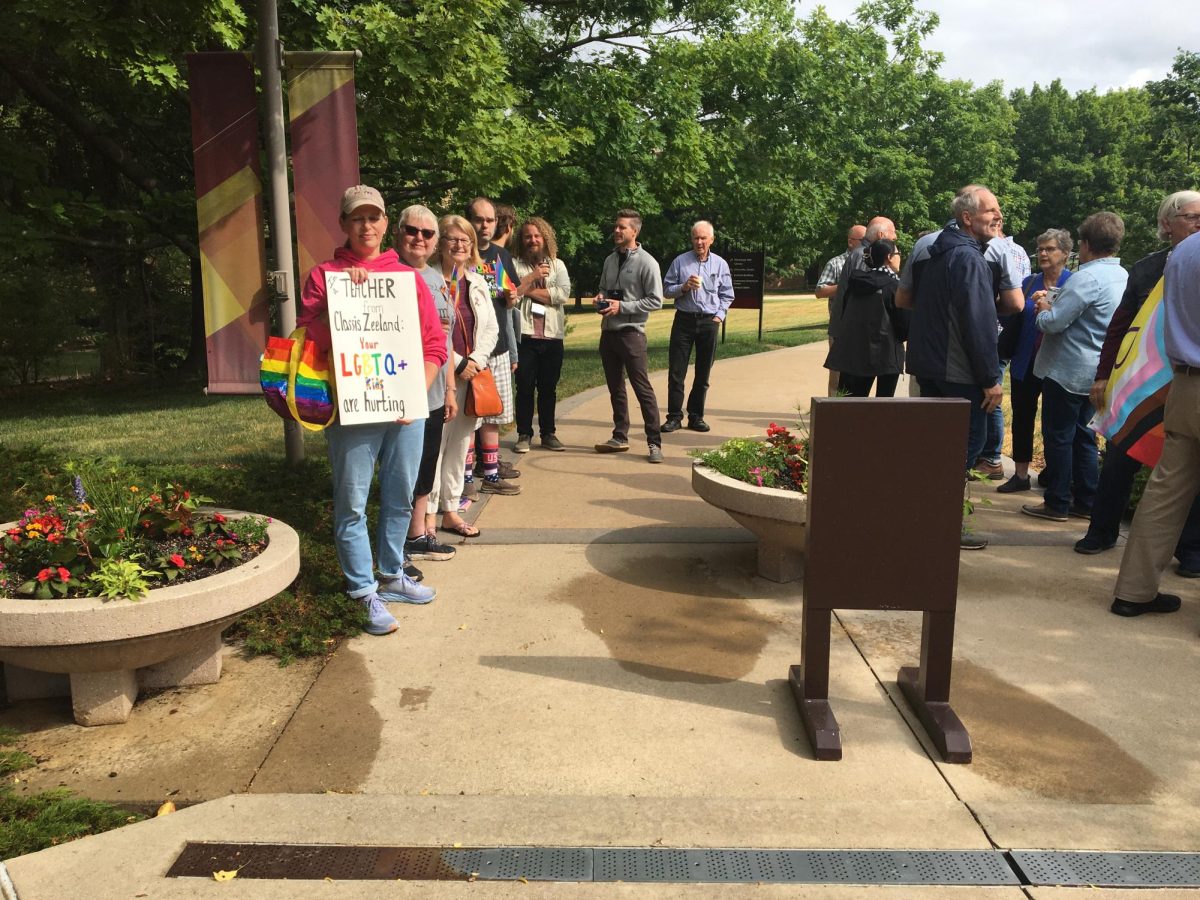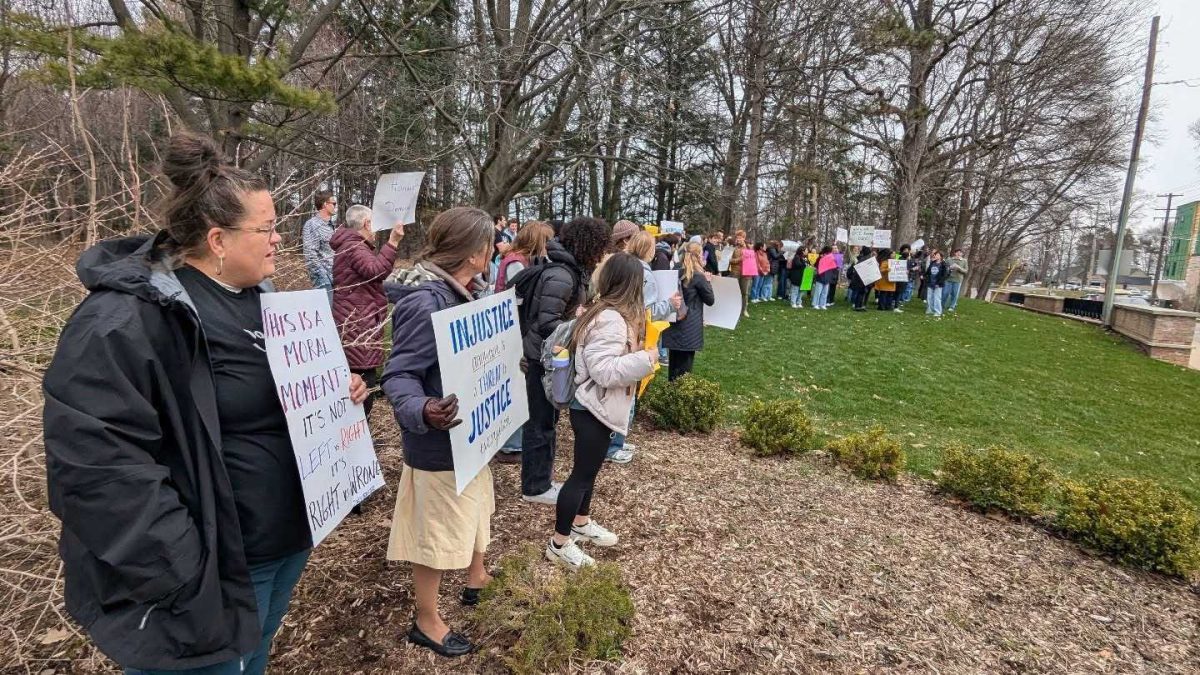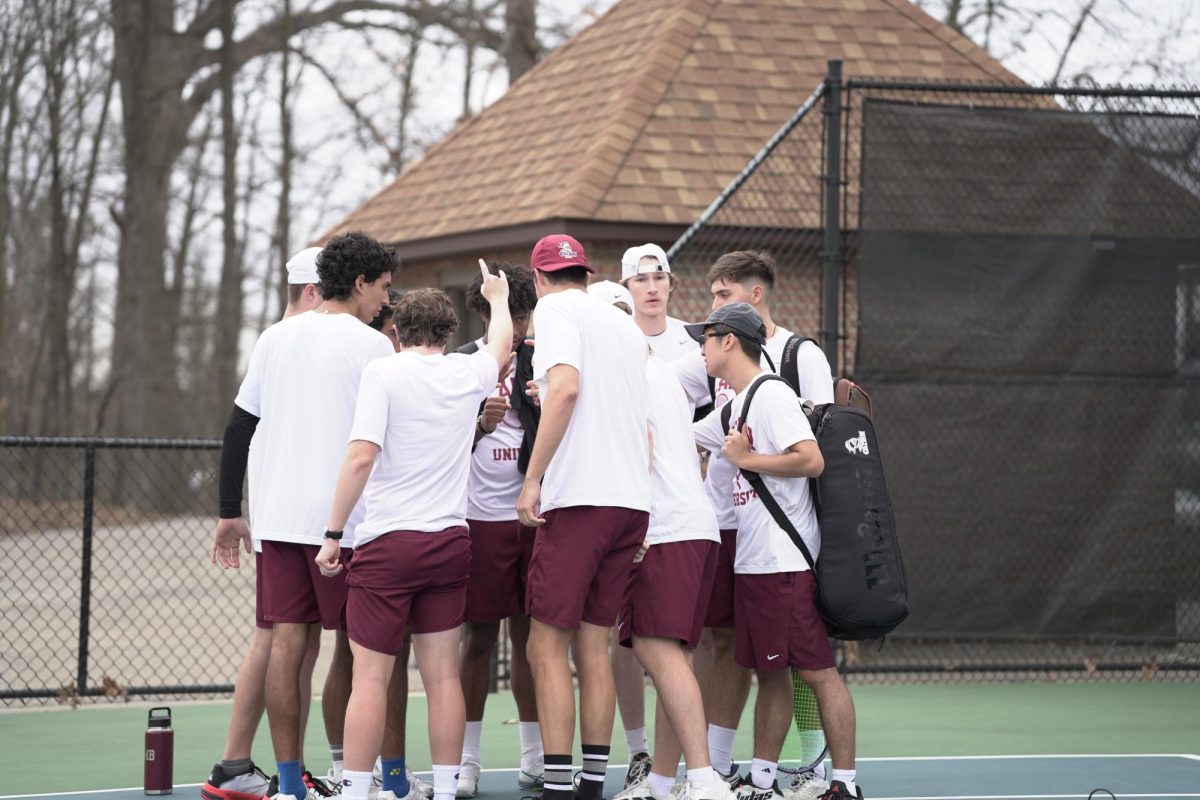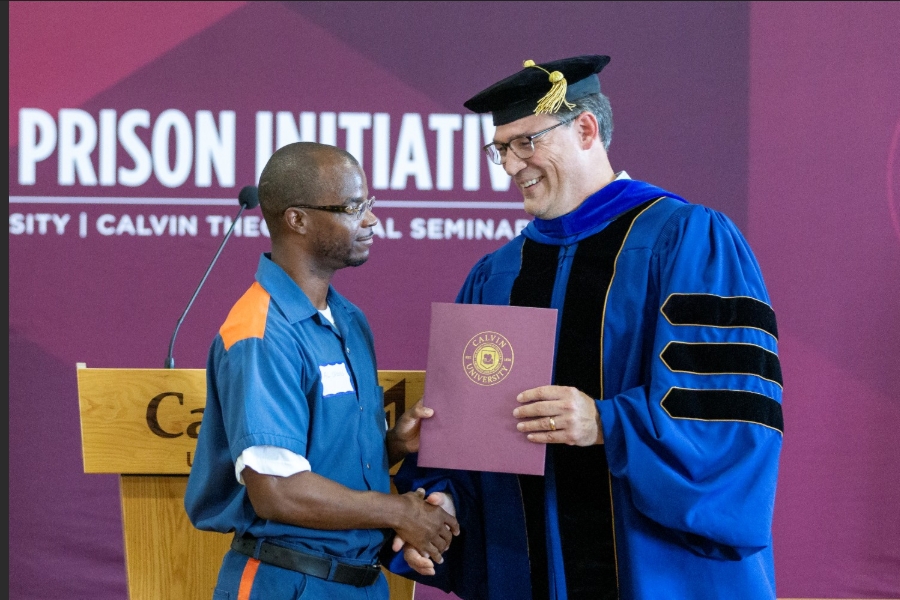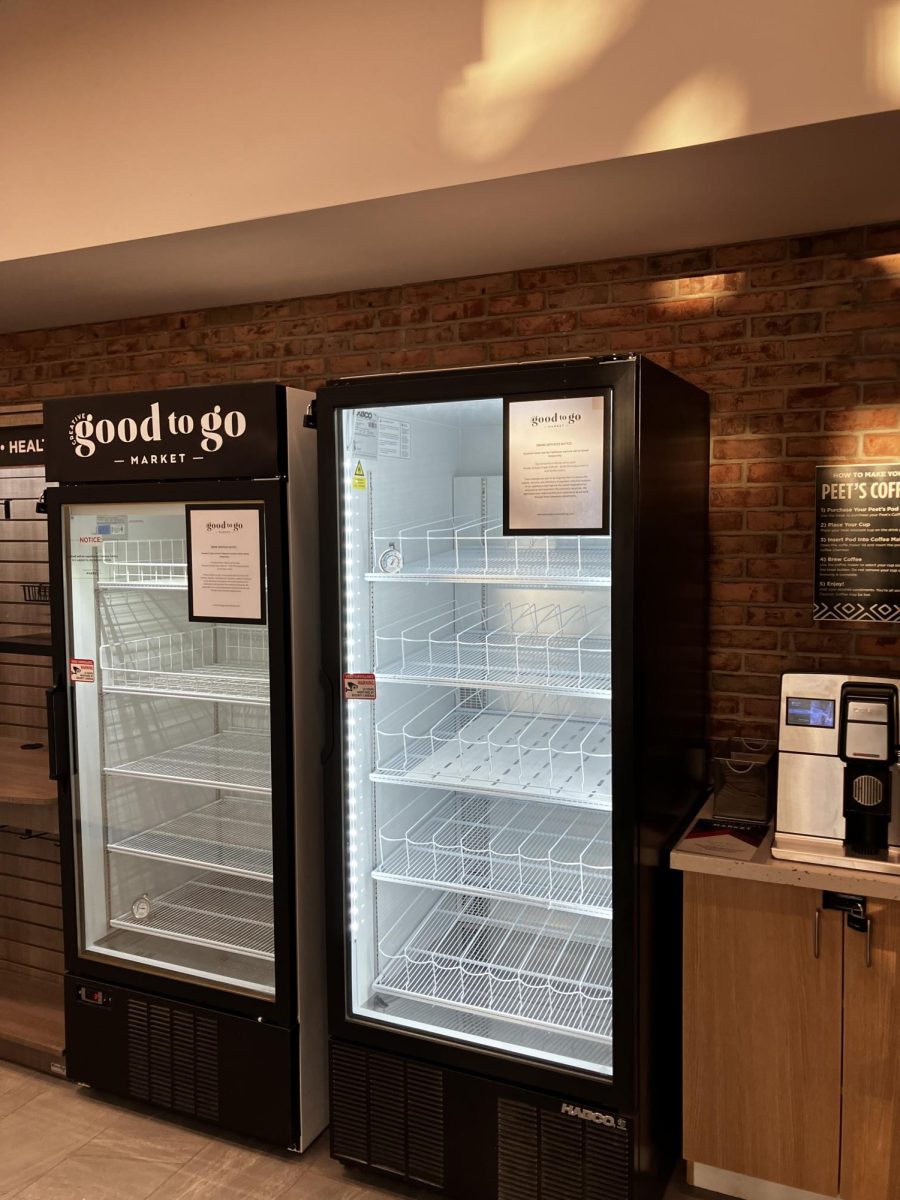Construction on Phase 1 of the Commons Union project — which has been in the works for nearly a decade — finally began on Aug. 21, 2023.
This construction, which makes the first three floors of the library inaccessible, is part of a 2015 master plan that includes “renewing the library toward a Learning Commons model” as well as the construction of a campus union, according to Sarah Visser, executive vice president of student experience and strategy. Initially, plans included a large three-story building located about where the commons annex is now.
The planning process was restarted around the fall of 2022 after being postponed due to budget cuts and the pandemic, David Malone, dean of the library, told Chimes.
“What’s a little bit different in this iteration is that the pandemic and the inflation that ensued altered the plans that Calvin had,” Malone said.
Today, the anticipated campus union building is smaller while more departments and student-facing services will be found in the library, Malone told Chimes.
Malone is far from upset about this. He said he accepted the job at Calvin “in part because of a vision of creating a Learning Commons.” In past years, he advocated to make the second floor of the library more open and collaborative. “[On] the second floor we created an environment where students were attracted to and they did schoolwork,” he said. The renovations happening this year will be a way to build communal, collaborative use of library space even more, Malone told Chimes.
The concept of a Learning Commons has been around in higher education for decades. A learning commons “involves designing spaces with user needs in mind, focusing on connection, collaboration, socialization, and content creation; in other words, spaces focused on fostering communication, critical thinking, problem-solving, and application of learning,” Sarah Visser told Chimes in an email.
“One of the biggest driving factors of a learning commons is not to push the books out, but to say ‘how do we best serve our learners?’” Malone said. Creating access to resources and support helps facilitate student learning, according to Malone.
Once the renovation is finished, the first floor, or the “garden level” of the library — where CIT is now — will still house CIT functions and testing rooms, but it will also host a space created for evening activities like poetry slams or watching the World Cup, serving the purpose Johnny’s Cave often does now.
The second floor will hold the Honors Cohort, Campus Involvement and Leadership offices, the Service Learning Center, the Chimes and Dialogue offices, a CIT Help Desk and other student-facing organizations.
The third floor will be the main floor of the library, where one will find the circulation desk, the Rhetoric Center and collaborative workspaces.
The first, second and third floor will connect directly to one another with large open staircases, rather than the corner stairwells now in use. The second floor will also connect directly to Hiemenga. Malone said this is intended to be a solution to difficulties students have navigating the library building.
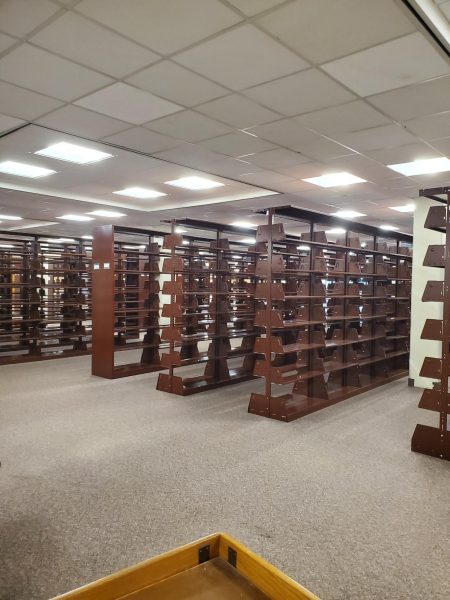
Once the renovations are finished, “you’ll come in off the Commons [lawn] into the library building and be able to just navigate all the way to Spoelhof [University Center] in a seamless way without wondering ‘where do I go next?’ It’s going to be open, flowing, collaborative,” he said.
In the meantime, the fourth and fifth floors are still in use, providing all the relevant services offered last year, including research help, interlibrary loans and more.
The biggest challenge for library staff has been the speed of the move, Malone said; trying to plan the new space while also moving books and preparing for students proved hectic.
“You know it was pretty chaotic at first because there was a lot to take care of, and there’s a lot of direction to give to people now that we’re trying to get settled,” Amanda Matthysse, student services librarian said. “But I kind of look at it as sort of like camping. It’s not luxurious, but that’s kind of part of the adventure, and it’s only for a short time anyway.”
The renovated space should be open for students at the start of the fall 2024 semester, Malone said.
No books have been removed from the library’s collection, though physical journals have been put in offsite storage.
To compensate for the reduced study space capacity, the library has partnered with student life to create reservable study rooms in dorm spaces. These can be accessed through the library’s website.




